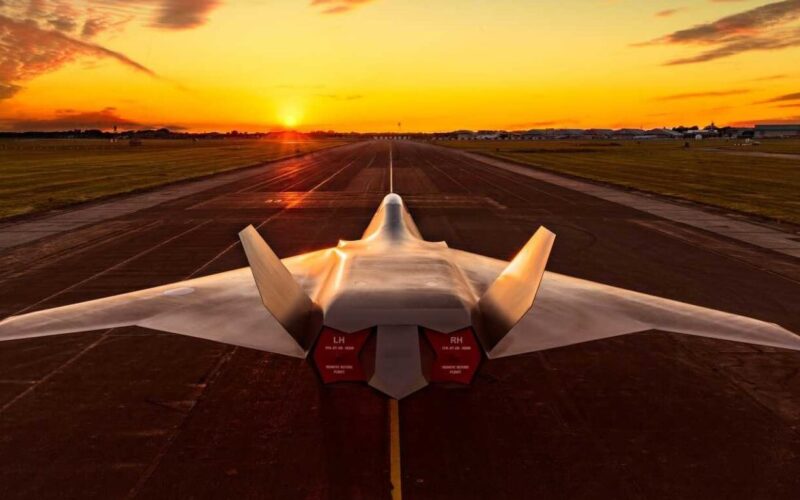The United Kingdom announced it would conduct a “joint concept analysis” with Japan and Italy to identify areas of potential common interest on the development of a sixth-generation fighter jet.
The partnership was announced at the Farnborough Airshow 2022 on July 18, 2022. Japan and the UK run parallel programs both aimed at designing the next generation of fighters.
The Tempest project involves the UK’s BAE Systems and Rolls-Royce, the European missile manufacturer MBDA, and Italy’s Leonardo.
The Japanese F-X program, led by Mitsubishi Heavy Industries, aims to develop an indigenous twin-engine sixth-generation stealth fighter jet.
The two projects are intended to replace the Eurofighter Typhoon and the Mitsubishi F-2 fighter jets in their respective air forces.
“I am a passionate believer in the potential of our burgeoning partnership, not just with Italy, but with Japan,” commented British Prime Minister Boris Johnson in an opening speech at the airshow. “The future combat aircraft system is not just a plane. It is a whole platform for technological change, and industrial spin offs of all kinds.”
Closer cooperation between the two countries on the fighter programs was indicated by several announcements over the last few months. In December 2021, British engine maker Rolls-Royce said it would assist Japanese engineering company IHI Corporation with developing the XF9 engine to power the F-X. Then in May 2022, BAE Systems said it would help Mitsubishi Heavy Industries, which is leading the Japanese program.
Italy has also expressed interest in joining the F-X development, according to comments made by the Italian Minister of Defense Lorenzo Guerini during a visit to Japan to meet with his Japanese counterpart in April 2022.
A prototype flying within five years
The United Kingdom and the Tempest’s lead company BAE Systems unveiled an ambitious timeline for the program, with a first demonstrator to fly within the next five years. To do so, the companies involved in “Team Tempest” revealed a plethora of projects.
In a video seemingly inspired by Game of Thrones and The Hobbit and involving a large dragon, Rolls-Royce showed off an engine demonstrator called Orpheus, which was “designed, built and tested in under two years to prove innovative technology developments” for future combat air systems.
BAE Systems unveiled a new “4.0” factory concept in Lancashire in which it will use robotics and 3D printing to deliver components for the Tempest aircraft “in half the time of previous programmes.”
Leonardo UK and Japan’s Mitsubishi Electric are to jointly develop a concept for a radar technology demonstrator called JAGUAR.
MBDA unveiled a concept weapon management system, based on an artificial intelligence and machine learning algorithm to “aid the coordination of all available weapons in the battle space.”
These advancements will no doubt be noticed across the Channel, where the other European sixth-generation fighter program is stalling over disagreements on workshare.
The Future Combat Air System (FCAS), a “system of systems” contracted by the authorities of France, Germany, and Spain, was set to enter service by 2040. But on June 7, 2022, Éric Trappier, CEO of Dassault Aviation, warned it may take another decade for the sixth-generation fighter jet to be operational.
“[The target of] 2040 is already missed, because we already stall, and the discussions of the next phase will surely also be long,” the CEO said speaking at the Paris Air Forum. “We rather aim for the 2050s.”

